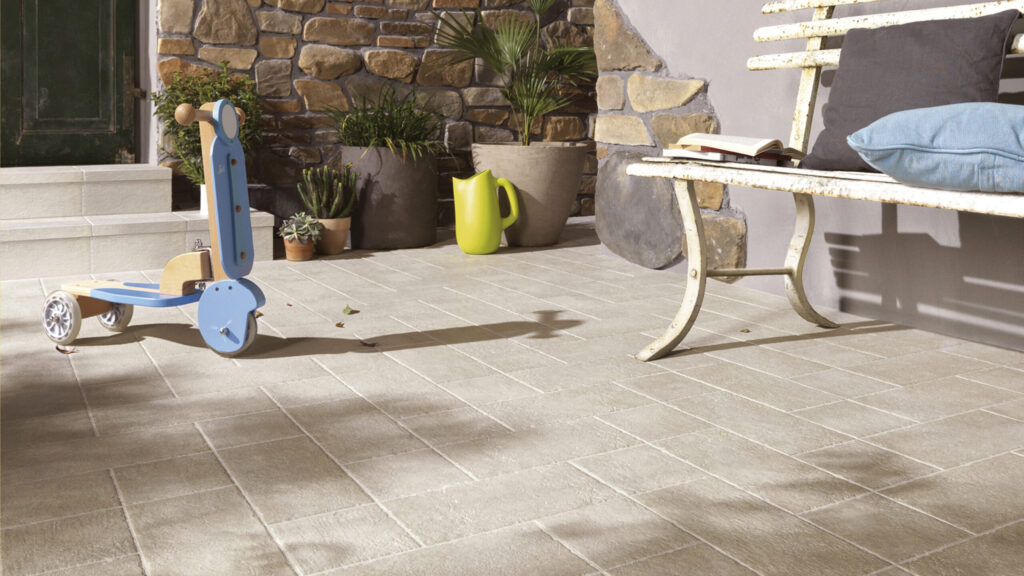Best Herringbone Tile Patterns to Transform Small Spaces
By Amelie Falconer / October 3, 2025 / No Comments / Outdoor Tiles
Table of Contents
ToggleIntroduction
Designing small spaces can feel like a challenge—how do you make them look bigger, brighter, and more stylish without overwhelming them? The answer might lie in a centuries-old design: herringbone tiles. Known for their V-shaped pattern, herringbone layouts add movement, texture, and elegance that can instantly transform compact rooms. Whether you’re renovating a bathroom, updating your kitchen, or upgrading a hallway, herringbone tile patterns are a clever way to elevate your modern home design.
In this article, we’ll explore the history of herringbone, why it’s timeless, the best tile patterns for small spaces, and practical tips on where and how to use them.
See more: Benefits of a Boundary Survey Before Fencing or Building
A Brief History of Herringbone Tiles
The herringbone pattern dates back to the Roman Empire, where it was first used in roads made of stone to create strength and stability. The name comes from its resemblance to the skeleton of a herring fish. Over the centuries, herringbone evolved into a decorative element in textiles, wood flooring, and eventually tiling.
Today, herringbone tiles are a staple in modern home design, blending historic charm with contemporary sophistication. Their versatility and timeless appeal make them particularly effective in small spaces.
Why Herringbone Works So Well in Small Spaces
Small rooms benefit from visual tricks, and herringbone patterns excel at this:
- Creates movement: The zig-zag layout draws the eye across the room, making it feel more dynamic and open.
- Adds depth: The diagonal lines break up uniformity, creating an illusion of space.
- Versatile style: Works equally well in herringbone bathroom tiles, herringbone kitchen tiles, or on flooring.
- Timeless appeal: Unlike trendy layouts that may date quickly, herringbone remains stylish across design eras.
Best Herringbone Tile Patterns for Small Spaces
1. Classic Herringbone
The traditional 45-degree angled pattern is perfect for small rooms. Its simplicity keeps the design elegant, while the angled layout helps elongate walls and floors.
2. Double Herringbone
This variation stacks two tiles side by side before setting them in the V-shaped layout. It creates a bolder, chunkier effect—ideal if you want your tilework to become the main feature of a compact space.
3. Diagonal Herringbone
Instead of laying the tiles parallel to walls, they’re installed at a diagonal. This creates a striking, dynamic look that’s especially effective in small bathrooms or narrow hallways.
4. Vertical Herringbone
Perfect for backsplashes and shower walls, vertical herringbone makes ceilings appear higher. It’s a clever trick for compact bathrooms or galley kitchens.

5. Mini Herringbone (Mosaic)
Small-format tiles in a herringbone layout are perfect for compact areas. Think of kitchen splashbacks or feature walls where detail matters. These add texture without overwhelming the space.
Where to Use Herringbone Tiles in Small Homes
1. Bathrooms
Using herringbone bathroom tiles in the shower area, behind the vanity, or on the floor adds elegance and makes the space feel larger. Light-colored tiles enhance brightness, while darker tones can create dramatic contrast.
2. Kitchens
For compact kitchens, herringbone kitchen tiles on the backsplash are a game-changer. They add depth and visual interest without consuming precious space. Pair with neutral cabinetry for a modern, balanced look.
3. Floors
Herringbone tile flooring works beautifully in narrow hallways or small entryways. The angled pattern tricks the eye into perceiving more width and depth, instantly opening up the area.
4. Accent Walls
Even a single wall of herringbone tiles can transform a small room. Consider a feature wall in the bathroom or a fireplace surround in a compact living space.
Installation Tips for Perfect Herringbone Tiles
- Plan ahead: Measure carefully and map out your design before laying tiles. Herringbone requires precision.
- Use spacers: Spacers help maintain consistent gaps between tiles.
- Hire professionals for large areas: DIY is possible for smaller projects like backsplashes, but professionals ensure flawless alignment for flooring.
- Choose grout wisely: Matching grout creates a subtle, seamless look, while contrasting grout highlights the pattern.
- Stick to scale: Use smaller tiles in compact rooms for balance, avoiding oversized pieces that may overwhelm the space.
Maintenance Tips for Herringbone Tiles
- Seal natural stone: If you’re using marble or natural stone, sealing prevents staining.
- Regular cleaning: Wipe down surfaces with a mild cleaner to prevent dirt buildup in grout lines.
- Grout care: Refresh grout occasionally to keep the pattern looking sharp.
- Avoid harsh chemicals: Use gentle products to preserve the finish of ceramic, porcelain, or marble tiles.
Conclusion
When it comes to modern home design, herringbone tiles are more than just a trend—they’re a timeless, versatile solution that works especially well in compact rooms. Whether you choose them for herringbone tile flooring, bathroom walls, or kitchen backsplashes, their ability to create depth and movement makes even the smallest spaces feel more open and sophisticated.
By experimenting with different herringbone patterns and materials, you can transform your home with elegance that never goes out of style.
FAQs
Herringbone tiles create movement and depth, which makes small rooms feel larger. Their angled design draws the eye across the space, creating a sense of openness. Lighter tiles amplify this effect, while darker tiles add boldness without overwhelming compact areas
Mini or vertical herringbone tiles are excellent for small bathrooms. Vertical layouts make ceilings look higher, while mini mosaics add texture and charm. Both options enhance space perception while keeping the bathroom stylish.
Yes, herringbone tiles are versatile. They’re popular for bathroom walls, kitchen backsplashes, and hallway flooring. Each application creates a unique effect—floors feel more expansive, while walls gain texture and visual interest.
Installation can cost more due to the precision required for the pattern. The additional labor and time make it pricier than standard layouts. However, the timeless, stylish results are often worth the investment
No special care is needed beyond regular cleaning and grout maintenance. For natural stone, sealing is important to protect against stains. Porcelain and ceramic tiles are easier to maintain and highly durable.
Light shades like white, soft gray, or beige make small kitchens look brighter and more spacious. For bold contrast, try navy or charcoal tiles with light grout. These add a modern, dramatic touch without closing in the space.
